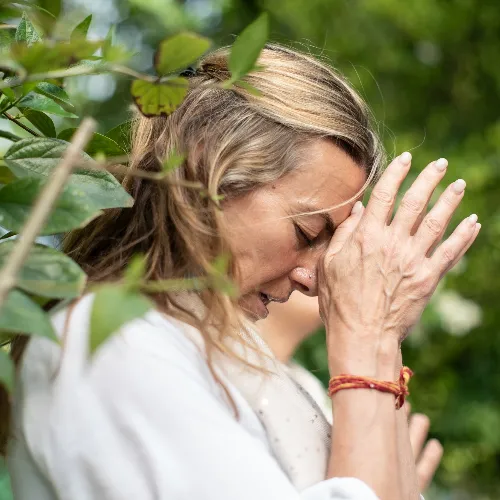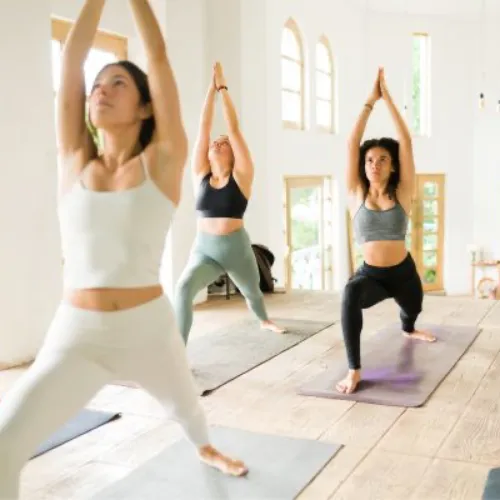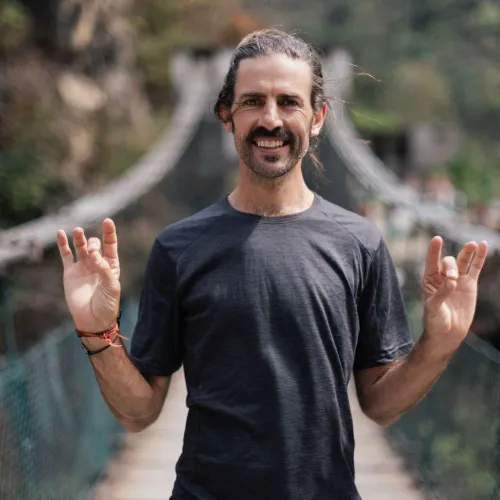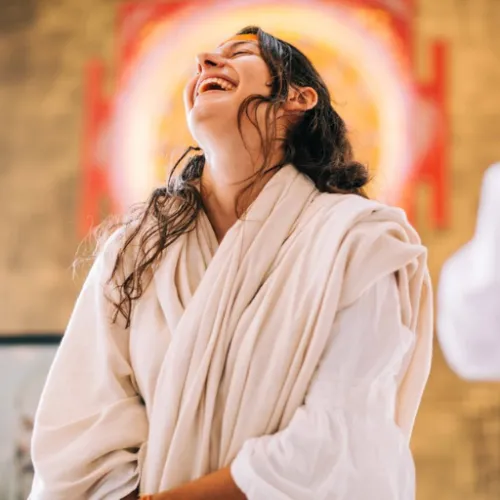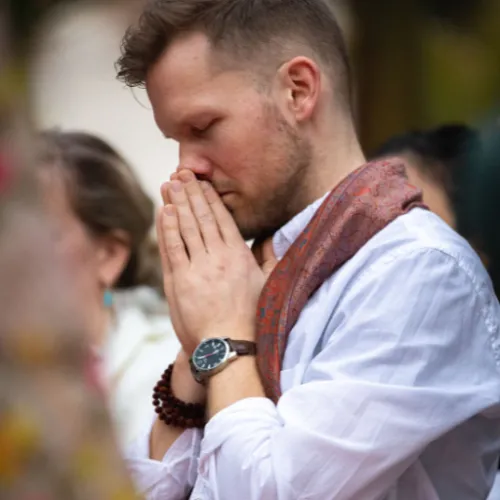


Ujjayi, meaning ‘victorious uprising’ and also ‘vibration’, refers to a partial contraction of the throat to control air flow. With this contraction, the breath becomes audible enough for others to hear, with some describing Ujjayi breath as sounding like the ocean.
How to pronounce Ujjayi?
Ujjayi has three syllables and sounds like ‘oo-jai-yee’.
Why practice pranayama (breathwork)?
Often, as we grow up, we begin to breathe in a way that is not optimal. Many people hold their bellies tight, so that only their chest is moving as they breathe. Chest breathing does not allow for the full expression of the breath and so induces pressure and increases stress in the body.
When you breath in a shallow way, there is less vitality and more anxiety in the body.
When you are experiencing anxiety or anger, you are breathing in a shallow way, so it’s important to really cultivate this habit of breathing deeply.
How does Ujjayi breath help?
In Ujjayi breath, the belly is always rising and falling. The belly is moving as there is diaphragmatic breathing occurring. The diaphragm is naturally pulling down, creating space in your lungs as you inhale. As you exhale the diaphragm moves up, pushing the air out. It’s a natural movement that happens, increasing the lung capacity and the oxygen that you are taking into the body, resulting in more vitality, more aliveness.
In Ujjayi breath, you are contracting your throat, creating a sound. This sound helps to keep you present, while also opening up the Vishuddha chakra (throat), increasing your capacity to speak in a clear way.
What are the benefits of Ujjayi breath?
- Improves focus & concentration
- Regulates body temperature
- Releases tension & toxins
- Reduces blood pressure & stress hormone levels
- Helps to release stress & increase presence
- Increases lung capacity
- Improves respiratory muscle health
- Calms the mind
- Awakens the Vishuddha chakra
- Increases vitality & aliveness
When to practice Ujjayi breath?
Ujjayi breath can be practiced both during asana sequences or as a standalone breathing exercise. It is key in Vinyasa flow. It deepens our access to conscious breath, while releasing toxins and tensions. When moving between poses, we inhale during reaching or expanding movements, and exhale during contracting or folding movements.
How to practice Ujjayi breath?
Find a comfortable seated position and sit tall with your shoulders relaxed. You might need a cushion under your sit bones so that your shoulders can stack above your hips without your back rounding.
Inhale and exhale through the nose. Keep the mouth closed and relaxed. Contact your throat slightly so that the breath becomes audible.
Single Ujjayi is contraction on inhalation whereas double Ujjayi includes contraction on inhalation and exhalation.
Feel the navel glide out with inhalation, diaphragm pulling down and lungs expanding, while the reverse happens with exhalation. Keep the breath slow and steady. You can start with 2 to 3 minutes and gradually work up to 20 minutes.
As you start to cultivate this practice of breathing more deeply into the body, you can place a hand on the navel and feel it move in and out as you breathe. The flow of breath should be smooth, not shaky.
So, what do you think? Are you ready to give it try? For more breathwork practices, check out the Pranayama Lab on Sattva Connect – Your Support to an Awakened Life!




















